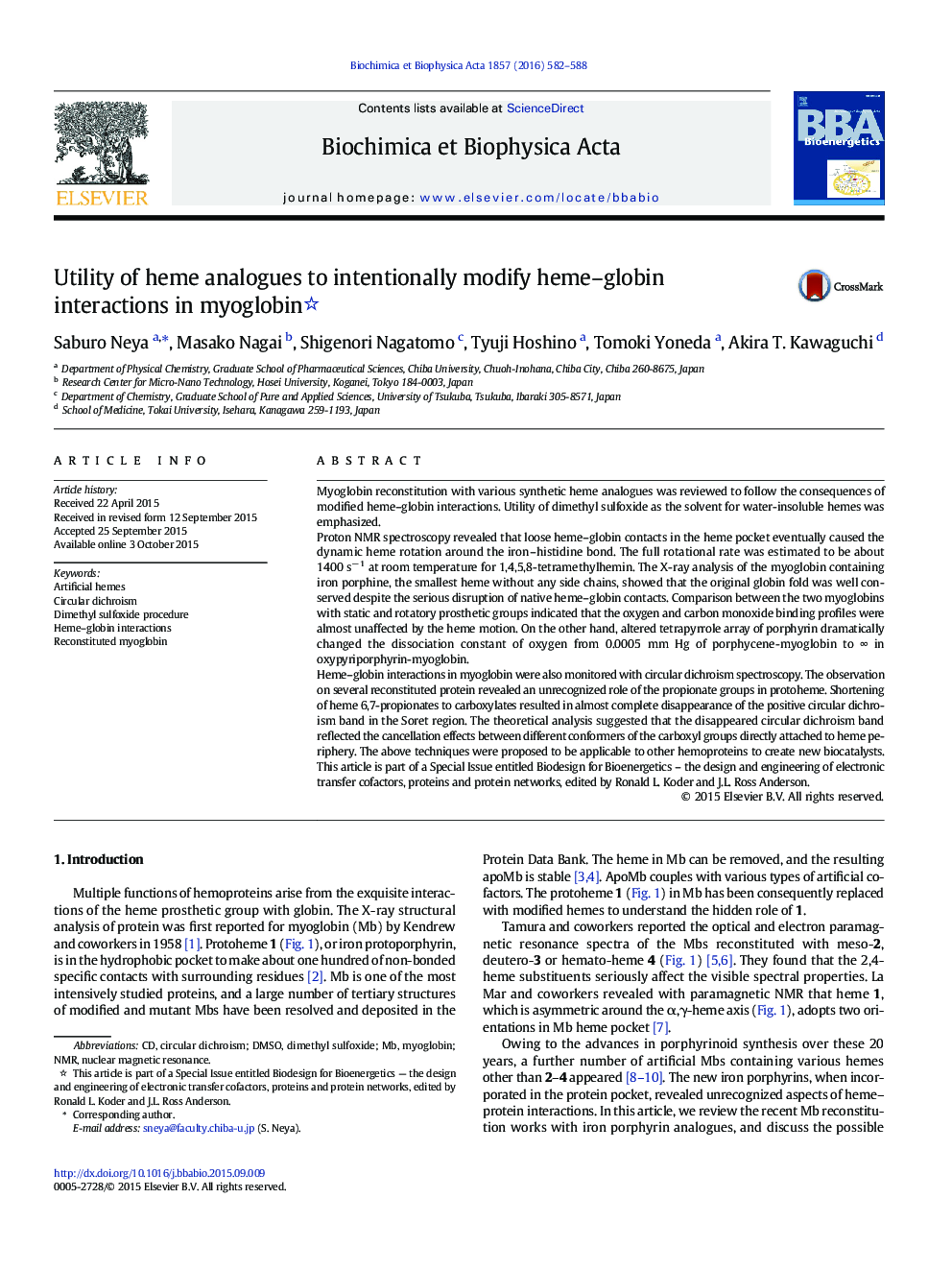| کد مقاله | کد نشریه | سال انتشار | مقاله انگلیسی | نسخه تمام متن |
|---|---|---|---|---|
| 1942092 | 1052570 | 2016 | 7 صفحه PDF | دانلود رایگان |
• Methodology for artificial heme incorporation to myoglobin cleft was developed.
• Small hemes rotate around the iron–histidine bond in myoglobin.
• The heme rotation only moderately affects the globin fold and function.
• Deformed hemes considerably affect the oxygen binding.
• Circular dichroism sensitively reflects altered heme–globin interactions.
Myoglobin reconstitution with various synthetic heme analogues was reviewed to follow the consequences of modified heme–globin interactions. Utility of dimethyl sulfoxide as the solvent for water-insoluble hemes was emphasized.Proton NMR spectroscopy revealed that loose heme–globin contacts in the heme pocket eventually caused the dynamic heme rotation around the iron–histidine bond. The full rotational rate was estimated to be about 1400 s− 1 at room temperature for 1,4,5,8-tetramethylhemin. The X-ray analysis of the myoglobin containing iron porphine, the smallest heme without any side chains, showed that the original globin fold was well conserved despite the serious disruption of native heme–globin contacts. Comparison between the two myoglobins with static and rotatory prosthetic groups indicated that the oxygen and carbon monoxide binding profiles were almost unaffected by the heme motion. On the other hand, altered tetrapyrrole array of porphyrin dramatically changed the dissociation constant of oxygen from 0.0005 mm Hg of porphycene-myoglobin to ∞ in oxypyriporphyrin-myoglobin.Heme–globin interactions in myoglobin were also monitored with circular dichroism spectroscopy. The observation on several reconstituted protein revealed an unrecognized role of the propionate groups in protoheme. Shortening of heme 6,7-propionates to carboxylates resulted in almost complete disappearance of the positive circular dichroism band in the Soret region. The theoretical analysis suggested that the disappeared circular dichroism band reflected the cancellation effects between different conformers of the carboxyl groups directly attached to heme periphery. The above techniques were proposed to be applicable to other hemoproteins to create new biocatalysts. This article is part of a Special Issue entitled Biodesign for Bioenergetics – the design and engineering of electronic transfer cofactors, proteins and protein networks, edited by Ronald L. Koder and J.L. Ross Anderson.
Journal: Biochimica et Biophysica Acta (BBA) - Bioenergetics - Volume 1857, Issue 5, May 2016, Pages 582–588
